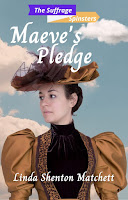Seneca Falls:
Women's Suffrage Meets It's a Wonderful Life
 |
| Pixabay/Tommy |
The Bayard Land Company held all the real estate on both sides of the Seneca River, but did minimal development, concerned that multiple mills couldn’t be supported (despite reports that the force of the falls could handle approximately one hundred and fifty millstones.) By 1825, the company was in financial straits, so the tract was divided and sold. The now-accessible water power was snapped up, and mills and factories sprang up. Within six years, five sawmills, five flour mills, two textile factories, and three tin and sheet-iron plants dotted the landscape.
In 1831, Seneca Falls was incorporated as a village with Ansel Bascom elected as the first mayor. Bascom would eventually become a congressman for the district with anti-slavery measures being his focus. With the completion of the Rochester-Auburn railroad system in 1841, the town could now reach world markets for its locally produced goods. The trains also brought an influx of settlers, many of whom were proponents of women’s rights and the abolition of slavery, with the town becoming a stop on the Underground Railroad.
Thus, it is unsurprising that in July of 1848 the town became the site of the first meeting to be held forthe strict purpose of discussing “social, civil, and religious conditions and the rights of women.” Considered by most scholars to be the birthplace of the fight for women’s rights, the Seneca Falls Women’s Rights Convention was attended by over three hundred people. Speakers included such luminaries in the cause as Susan B. Anthony, Lucretia Mott, Elizabeth Cady Stanton, and Frederick Douglass, and “A Declaration of Sentiments” was adopted. Seneca Falls is now home to the National Women’s Hall of Fame built in 1969.
Today, more than one hundred years later, Seneca Falls celebrates its claim to be the inspiration for Frank Capra’s film, “It’s a Wonderful Life.” An annual festival is held the second week in December, with dozens of activities each day. This year’s guests included actress Karolyn Grimes (Zuzu Bailey), Jimmy Hawkins (Tommy Bailey), Donald and Ronald Collins (Young Pete), and Michael Chapin (Young George’s Friend). Also on hand were Donna Reed’s daughter Mary Owens and Frank Capra’s granddaughter Monica Capra Hodges.
 |
| Courtesy IAWL Museum |
A visit to this intriguing town is now on my bucket list. Have you heard of this tiny hamlet?
____________________
Maeve’s Pledge – available soon for preorder
Pledges can’t be broken, can they?
Finally out from under her father’s tyrannical thumb, Maeve Wycliffe can live life on her terms. So what if everyone sees her as a spinster to be pitied. She’ll funnel her energies into what matters most: helping the less fortunate and getting women the right to vote. When she’s forced to team up with the local newspaper editor to further the cause, will her pledge to remain single get cropped?
Widower Gus Deighton sees no reason to tempt fate that he can find happiness a second time around. Well past his prime, who would want him anyway? He’ll continue to run his newspaper and cover Philadelphia’s upcoming centennial celebration. But when the local women’s suffrage group agrees that the wealthy, attractive, and very single Maeve act as their liaison, he finds it difficult to remain objective.



No comments:
Post a Comment